Visions of Warriors is a feature documentary by filmmaker Ming Lai that tells the stories of four U.S. military veterans from the Vietnam War era to the Iraq War who participated in the Veteran Photo Recovery Project at the VA Menlo Park in California. The Veteran Photo Recovery Project uses innovative photography therapy to treat mental illness.
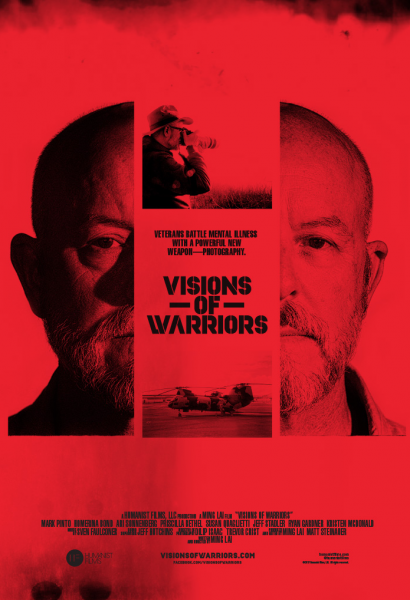
I sat down with Ming Lai to ask him about how he came up with the idea for the film, and how it was planned and executed.
Tell us a little about your background?
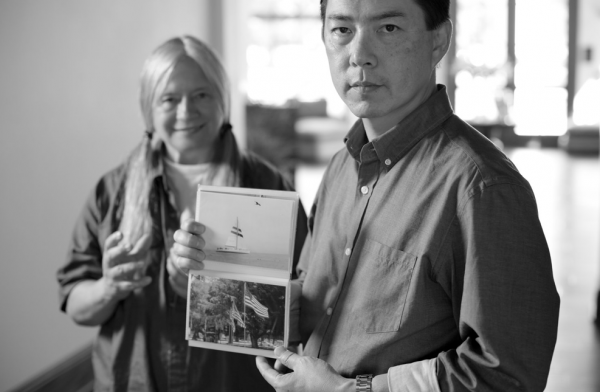
I’m a filmmaker and photographer based in Los Angeles. I received a B.A. in English from the University of California, Los Angeles and then an M.A. in English from the California State University, Long Beach. I started my career as a copywriter in advertising and later transitioned to producing, writing, and directing short films, commercials, and corporate videos. Some of my clients include Coldwell Banker, Epson, Fujitsu, Marukome, and Yakult.
Most recently, I’ve been producing, writing, and directing feature documentaries as well as doing fine art and documentary photography. My latest photography projects are a continuing series on contemporary architecture and a series on the Manzanar War Relocation Center. My latest film project is the feature documentary, “Visions of Warriors.”
What is the “Visions of Warriors” project all about?
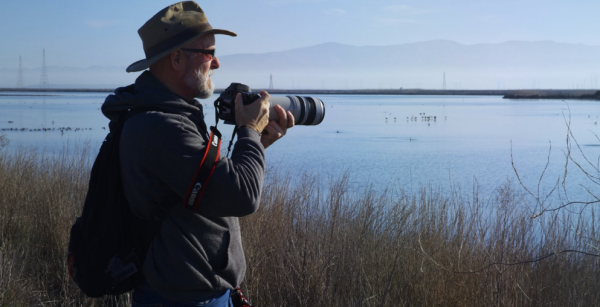
“Visions of Warriors” is a feature documentary about four veterans from the Vietnam War era to the Iraq War who participate in the groundbreaking Veteran Photo Recovery Project (VPRP) at the Veterans Affairs (VA) Menlo Park in California and use innovative photography therapy to treat their mental illness.
The film features veterans Mark Pinto, Homerina “Marina” Bond, Ari Sonnenberg, and Priscilla “Peni” Bethel, who are battling against moral injury, post-traumatic stress disorder, military sexual trauma, and other mental illnesses. It also showcases the VPRP team—founder and nurse practitioner Susan Quaglietti, art therapist Jeff Stadler, clinical social worker Ryan Gardner, and clinical psychologist Kristen McDonald. In addition, the film introduces other dynamic veterans who participated in the program.
The film follows the incredible journeys of the four veterans from their diverse backgrounds, challenging military service & debilitating mental illness to their intensive treatment. To mirror their shattered lives, the film uses a non-linear structure to tell their stories, alternating between the veterans and the VPRP team. Ultimately, their collective stories become a universal one about the strength of the human spirit.
Did you have a personal interest in telling this story?
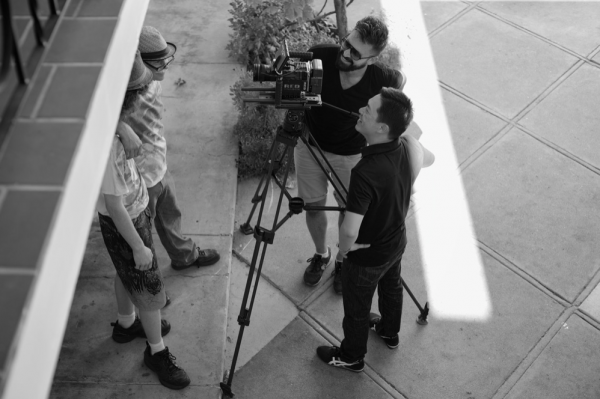
I’m passionate about photography, inheriting my love from my father who was a professional photographer in China. For many years, I’ve been developing a feature narrative film about a war photographer who’s suffering from a post-traumatic stress disorder. So his war and conflict photography causes his mental illness. Then I learned about Susan Quaglietti and her VPRP, which uses photography therapy to treat veteran mental illness. To my surprise, it was the exact opposite of my film. So I was immediately intrigued by her and her program and was inspired to do a feature documentary about them.
I’m also interested in exploring social issues and more generally the human condition, addressing subjects like war, illegal immigration, art education, and mental illness. In this particular story, I’m studying how war can cause mental illness and how it can be treated with photography therapy or in general art therapy. So it combines some of my ongoing themes of war and art.
Describe the pre-production process and how you found the characters in this film?
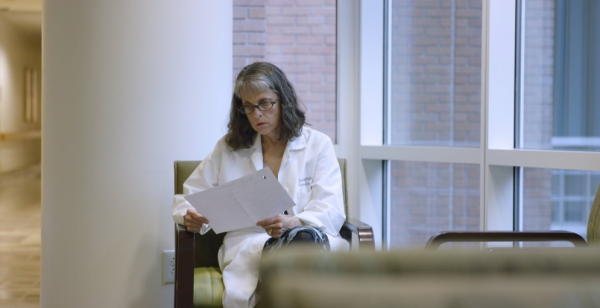
The pre-production process was relatively fast, compared to my other films, which can take months. After I learned about Susan Quaglietti, the nurse practitioner who founded the VPRP, I immediately contacted her about doing a feature documentary about her and her innovative program. Because I couldn’t find her contact info on the internet, I wrote a letter to her at the VA Menlo Park in California, where the program is based. Luckily, despite the massive size of the VA Menlo Park and the VA system in general, she received my letter and was interested in our project.
Susan and her VPRP team were integral in making the documentary. They helped us to obtain access to the VA, find the veterans who were willing to participate in the film, coordinate the veterans’ shooting schedules, and learn about the veterans’ mental illnesses. We interviewed many veterans before deciding on whom to feature in the film. We wanted a diverse group of veterans to represent the veteran population, considering gender, age, ethnicity, socio-economic background, the branch of service, war period, and other important factors. Eventually, we chose four powerful veterans to be the main characters in our film.
How long did the planning take for this shoot?
While pre-production was short and simple, production and its planning were long and complex. We shot the documentary over the course of one-and-a-half years. So we had to coordinate with the busy schedules of the VPRP team, the veterans, and our crew. Plus, we’re based in Los Angeles so we had to travel to Menlo Park, California and the surrounding areas, where the program and veterans are located. In the end, we made five trips to Menlo Park, filled with jam-packed shooting schedules.
Even more challenging than planning the logistics of multiple shoots was searching for funding. Because we believed in the importance of the program, we provided the initial funding for the production of the documentary and greenlit the project. During production and post-production, we applied to all the major grants, which was very time-consuming. Luckily, we received a generous grant from Stanford Medicine & the Muse Program. We also worked with a fiscal sponsor, the respected International Documentary Association. With their assistance, we ran a successful fundraising campaign. Thanks to all of the grantors, sponsors, donors, and supporters, we were able to complete the film.
How big was the crew?
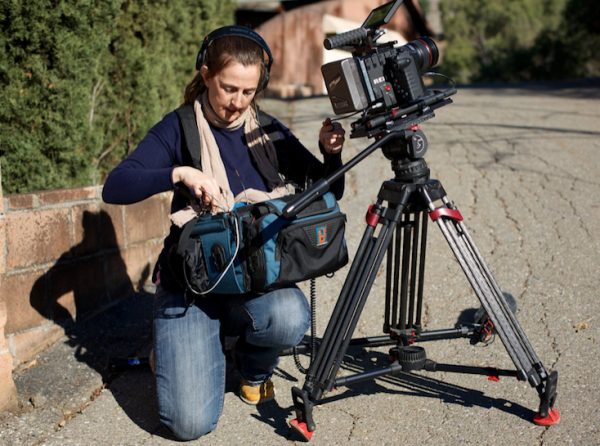
We shot the documentary with a tiny crew not only because we had a limited budget but more so because we wanted to be sensitive to the needs of the veterans, many of whom had never publicly shared their stories or been on camera before. The crew consisted of just myself as the producer/writer/director, a director of photography (Dilip Isaac and Trevor Crist), a location sound mixer (Stacy Hruby and Micah Mucklow, with Stephen Thorpe and Randy Thieben subbing in), and a production coordinator (Ernest Cheng). We were able to pull off this feature documentary with such a small crew because of my passionate, hardworking, and multidisciplinary colleagues.
Our shooting crew was also supported by a talented post-production team back at home, with whom we kept in constant contact—producer/editor Matt Steinauer, composer Sven Faulconer, sound supervisor/sound designer/foley artist Jeff Hutchins of Jeff Hutchins Sound Design and Channel Islands Foley, dialogue editor/music editor/sound effects editor/re-recording mixer Bruce Greenspan of Surfrider Sound Company, sound effects editor Roy Braverman of Bravermania, foley artist Danny Tchibinda, Monkeyland Audio, and graphic designer Sven Igawa of Igawa Design.
What equipment did you use and why?
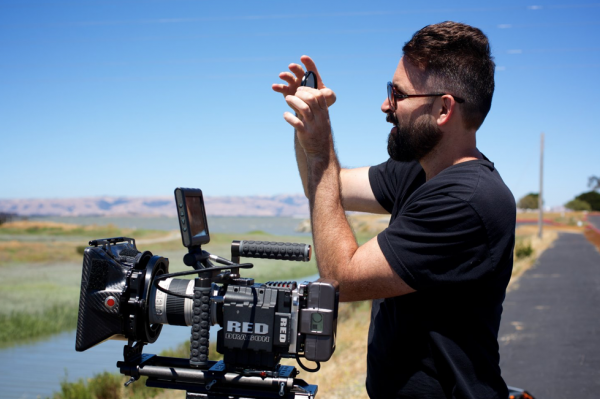
We shot the documentary with a RED Epic Mysterium-X (5K) and later a RED Epic Dragon (6K), paired with Canon L-series lenses (a Canon EF 24-70mm f/2.8 II USM lens and a Canon EF 70-200mm f/2.8 II USM lens), powered by Anton Bauer Dionic-HC batteries, and supported by a Sachtler DV12 tripod. We also used a GoPro Hero 3+ Black Edition for action footage and my own Canon 5D Mark III and Sachtler DV8 tripod for behind-the-scenes video and photos. For our lighting package, we used a K5600 lighting kit with two Joker-Bug 200W lights and Chimera Light Banks.
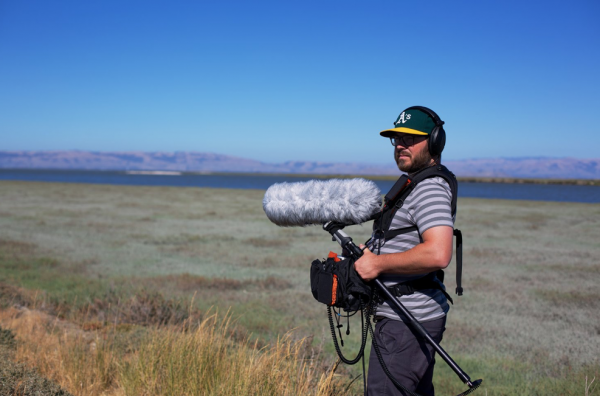
We worked with two main location sound mixers, Stacy Hruby and Micah Mucklow. Stacy chose Lectrosonics wireless lav mics, a Sennheiser MKH 416 short shotgun microphone, a K-Tek boom pole, and a Sound Devices 522 mixer recorder. Micah opted for Sennheiser EW 100 G3 wireless lav mics, a Rode NTG2 shotgun microphone, a K-Tek boom pole, a Sound Devices 302 mixer, and a Zoom H4N recorder. I also brought my own sound gear for the Canon 5D Mark III —Sennheiser EW 100 G3 wireless lav mics, a Sennheiser ME66/K6 super-cardioid microphone, and a JuicedLink Riggy Micro RM-333 pre-amp.
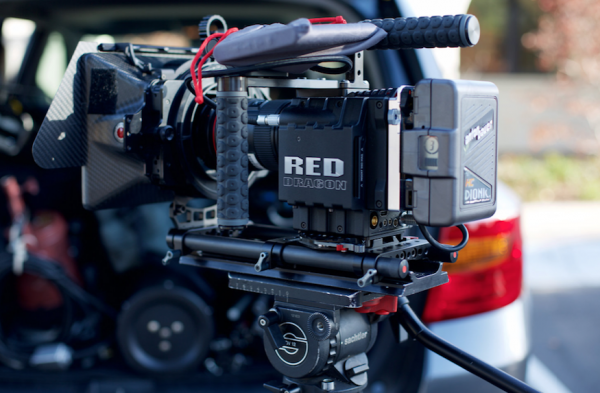
My directors of photography, Dilip Isaac and Trevor Crist, and I chose the RED cameras and Canon lenses because we have a lot of experience using them in previous narrative and commercial projects. We’ve been using RED cameras since the RED One. We also have access to them through my co-producer Matt Steinauer’s company, Infinite Siege. I love the cameras’ small size, high resolution, rich color science, wide dynamic range, and sensitive low-light capability. I also like the sharp, contrasty, and rich look of the Canon lenses.
I edited the film on a Mac Pro with Final Cut Pro X and color graded it with the Color Finale plugin. I chose a Mac Pro and FCP X because I’m more familiar with Macs and had used earlier versions of the editing program. I found FCP X to be fast and intuitive. While I experimented with DaVinci Resolve for color grading and appreciated its powerful tools, I ended up using Color Finale so that my workflow was faster and more seamless, not having to roundtrip the project. I loved how the plugin brought back color wheels to FCP X, which I found to be easier to use than FCP X’s Color Board.
Did you consciously try and shoot this in a particular style?
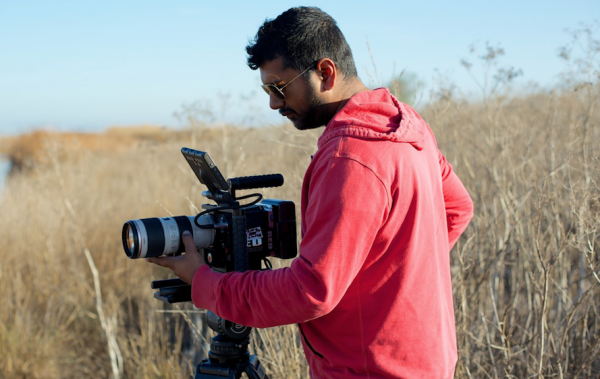
Usually, we try to shoot every project in a unique style that’s inspired by its subject matter. We also attempt to design every frame so that it’s filled with meaning, whether it’s overt, symbolic, or both. Ideally, everything is deliberate, and nothing is left to chance. It’s more challenging to do this with documentaries compared to narrative films because they’re usually not planned and everything is spontaneous. Despite this fact, you’re still able to engage with your subject and respond to the space that you’re in, which can inspire your shooting style.
In this case, our main goal was to try to understand the veterans and what they’re going through. We often used close-ups, physically connecting with the veterans, so the viewer can get into their heads. Alternatively, we employed numerous wide shots with lots of negative space to show the loneliness and alienation of the veterans. Sometimes, we would heighten this effect with symmetrical or rectilinear framing to confine the veterans, locking them up in this empty space. We also suggested disorientation or confusion with dutch angles. In addition, there are many voyeuristic shots, peeking through doors or windows, to allow the viewer to get a glimpse of the veterans’ private worlds.
We also used light & shadows and color to portray the mental state of the veterans. The veterans were often hidden in shadows, showing their depression. Similarly, light would suggest hope or enlightenment. Sometimes, the veterans would be bathed in golden sunlight as they explained their paths to recovery. We often used the natural colors to symbolically represent their feelings, like blue for depression, red for despair, and gold for hope. In one important scene, a veteran is enveloped by the red light of a darkroom as he reveals the cause of his mental illness, suggesting he’s in the depths of hell.
Lastly, because this documentary is about photography therapy, we were deeply inspired by photography, in particular, photojournalism and documentary photography. We did a lot of research on iconic photo essays in Life Magazine and National Geographic that documented people’s lives. We wanted the film to look cinematic but in a photographic way. A lot of the shots are precisely framed and locked down to emulate still photography. We also did many black-and-white motion portraits, where the veterans would gaze into the camera for extended moments, inviting the viewer to look at them, get to know them and try to understand their challenging situations, which often get stereotyped or simply ignored.
How long did the project take to film?
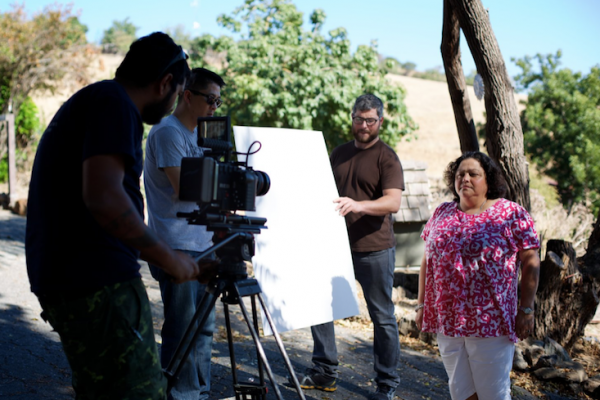
It took one-and-a-half years for production and another one-and-a-half years for post-productionon. Post-production took longer than expected because in addition to producing, writing, and directing, I also took on the challenges of editing and color grading the documentary. Originally, my co-producer Matt Steinauer, who’s a professional editor, was going to edit the film. However, he became ill and wasn’t able to edit it. Because we had a tight post-production schedule and it would have cost too much money to hire another editor, I decided to edit and color grade the film myself. It was extremely challenging building an editing system, learning the editing program, editing a feature-length documentary, and finally color grading it. In retrospect, I think it was the best decision because it allowed me to develop my editing skills and fully express my own vision for the film. But finishing the film wouldn’t have been possible without the technical support of my team.
What did you learn from making this film?
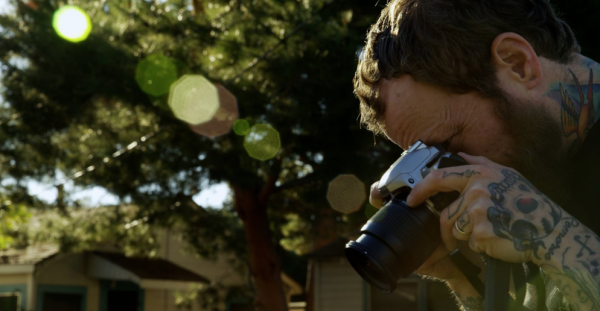
Making this documentary was an incredible learning process, from applying for grants and running a fundraising campaign to learning about mental illness and working with sensitive subjects to editing a feature-length documentary and doing audio post-production to self- distributing the film and engaging in community outreach.
However, the greatest lesson from this entire process was the power of hope. Despite everything that the veterans had gone through, from depression to substance abuse to suicide attempts, they still had hope. Their tenacious grip on this idea would allow them to battle their mental illness, find treatment, start recovery, and take back their lives.
All of the veterans and VPRP team members in the documentary were willing to participate and share their lives in order to help other veterans and inspire hope in them. My team and I are deeply honored to be able to document the extraordinary lives of the veterans and the VPRP team and convey this important message.
What you do hope the audience gets out of this film?
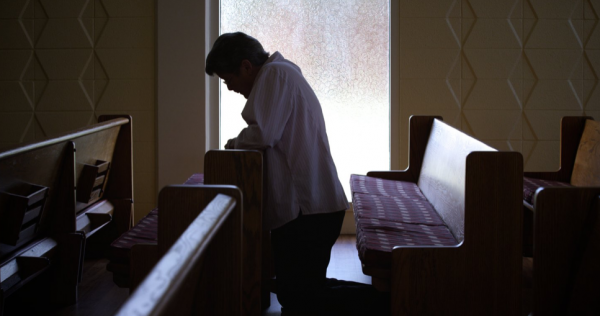
We hope that we’re able to raise awareness about the rise of veteran mental illness and the power of innovative photography therapy to treat it. Shockingly, 22 veterans commit suicide each day. This tragic statistic doesn’t seem to be getting any smaller. Hopefully, by learning about photography therapy, art therapy, and other alternative therapies, veterans and their families as well as health professionals find new ways to treat mental illness and reduce and even eliminate the number of veterans committing suicide. Most of all, we want to inspire hope in veterans who are suffering from mental illness—whether they are from the U.S. or other countries. Ultimately, veterans are the ones who can teach us the most about war and how to create peace.
Where can people watch “Visions of Warriors”?
We released “Visions of Warriors” last Veterans Day in the U.S. (11/11/17) to honor veterans. It’s now available on Amazon Video Direct, Apple iTunes, Google Play, and Vimeo on Demand as well as on our site: visionsofwarriors.com/store
To learn more about our documentary: visionsofwarriors.com To learn more about our work: humanistfilms.com





